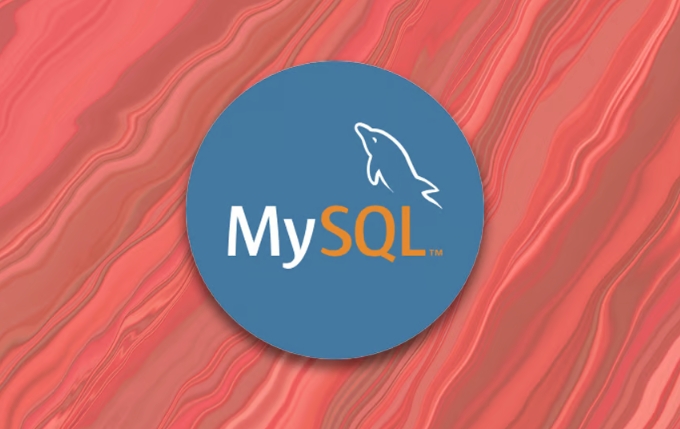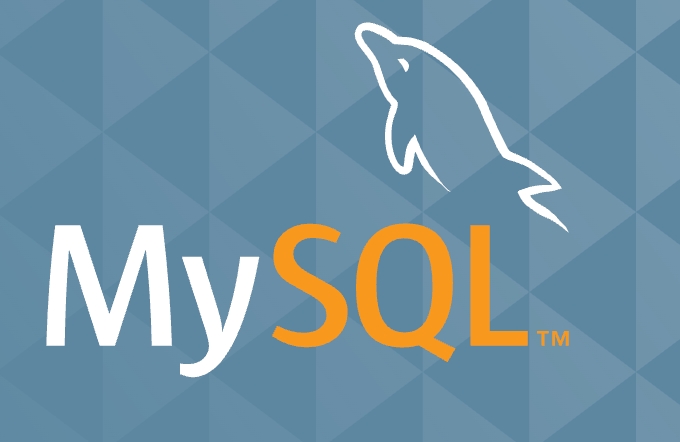MySQL security requires systematic vulnerability management. First, you should regularly use automation tools to scan vulnerabilities, such as OpenVAS, Nessus or Nikto, to identify the default configuration, weak passwords and unpatched versions; second, update the MySQL version and patches in a timely manner, pay attention to official announcements, and test the environment to verify compatibility; again, strictly manage user permissions, follow the principle of minimum permissions, control access sources by account and disable invalid accounts; finally, combine log monitoring and external tools to detect abnormal behavior in real time, and set alarm rules to detect attacks early.

MySQL is the core database of many applications. Once security issues break out, the impact may be very great. Basic protection alone is not enough. There must be a systematic vulnerability management mechanism to continuously discover, evaluate and repair potential risks.

Regularly scan for MySQL vulnerabilities
Don't wait until something happens before remembering to find out the loopholes. Automation tools should be used to scan MySQL servers regularly, such as OpenVAS, Nessus, or lighter tools such as Nikto. These tools can identify issues such as default configuration, weak passwords, unpatched versions, and more.
A few common points:

- Are you still using the default port (3306) and there is no firewall restrictions?
- Are there any accounts that use empty or weak passwords?
- Is unnecessary remote access enabled?
It is recommended to scan at least once a month, and also before launching a new service.
Timely updates to MySQL versions and patches
MySQL official will release security updates regularly. If you do not upgrade for a long time, you may be exposed to known vulnerabilities. For example, in the past few years, some versions have had the problems of permission bypassing, denial of service, and even remote code execution.

Update suggestions:
- Follow the official security announcement email or CVE list
- Test environment to verify patch compatibility first and then promote production
- Avoid jumping too many versions to directly upgrade, which is easy to get stuck
Sometimes you think it's just a small update, but it may just fix a high-risk vulnerability. Therefore, keeping the version updated is one of the lowest-cost defense methods.
Manage user permissions and access controls
Many data leaks are not due to system vulnerabilities, but because of too loose permission configuration. For example, an application account that should only read data has DROP permissions; or all applications use root to connect to the database.
You can optimize this:
- Minimum permission principle: only the required permissions
- Account management: Use different accounts to connect to different applications
- Restricted access source: Setting up the IP segment that allows connections with
GRANT - Delete or disable an account that is no longer used
For example, if you have a web application that only needs to read and write a certain library, it does not need to allow it to access other libraries, nor does it need to allow it to delete table structures.
Log monitoring and abnormal behavior detection
MySQL comes with slow query logs and error logs, and can also enable general logging all operations. Although general-purpose logging performance is expensive, it is worth considering on critical systems.
Combined with external tools such as ELK (Elasticsearch Logstash Kibana) or SIEM systems, the following behaviors can be monitored in real time:
- A large number of failed login attempts (probably brute force)
- Operations during abnormal time periods (such as modifying the administrator account permissions at 3 a.m.)
- A large number of SELECT or DELETE operations (maybe the data is pulled)
Set up alarm rules to detect exceptions early in the attack.
Basically that's it. Vulnerability management is not a one-time task, but an ongoing process. As long as MySQL is running, someone has to stare at its security state.
The above is the detailed content of Securing MySQL with Vulnerability Management Programs. For more information, please follow other related articles on the PHP Chinese website!

Hot AI Tools

Undress AI Tool
Undress images for free

Undresser.AI Undress
AI-powered app for creating realistic nude photos

AI Clothes Remover
Online AI tool for removing clothes from photos.

Clothoff.io
AI clothes remover

Video Face Swap
Swap faces in any video effortlessly with our completely free AI face swap tool!

Hot Article

Hot Tools

Notepad++7.3.1
Easy-to-use and free code editor

SublimeText3 Chinese version
Chinese version, very easy to use

Zend Studio 13.0.1
Powerful PHP integrated development environment

Dreamweaver CS6
Visual web development tools

SublimeText3 Mac version
God-level code editing software (SublimeText3)
 Handling NULL Values in MySQL Columns and Queries
Jul 05, 2025 am 02:46 AM
Handling NULL Values in MySQL Columns and Queries
Jul 05, 2025 am 02:46 AM
When handling NULL values ??in MySQL, please note: 1. When designing the table, the key fields are set to NOTNULL, and optional fields are allowed NULL; 2. ISNULL or ISNOTNULL must be used with = or !=; 3. IFNULL or COALESCE functions can be used to replace the display default values; 4. Be cautious when using NULL values ??directly when inserting or updating, and pay attention to the data source and ORM framework processing methods. NULL represents an unknown value and does not equal any value, including itself. Therefore, be careful when querying, counting, and connecting tables to avoid missing data or logical errors. Rational use of functions and constraints can effectively reduce interference caused by NULL.
 Performing logical backups using mysqldump in MySQL
Jul 06, 2025 am 02:55 AM
Performing logical backups using mysqldump in MySQL
Jul 06, 2025 am 02:55 AM
mysqldump is a common tool for performing logical backups of MySQL databases. It generates SQL files containing CREATE and INSERT statements to rebuild the database. 1. It does not back up the original file, but converts the database structure and content into portable SQL commands; 2. It is suitable for small databases or selective recovery, and is not suitable for fast recovery of TB-level data; 3. Common options include --single-transaction, --databases, --all-databases, --routines, etc.; 4. Use mysql command to import during recovery, and can turn off foreign key checks to improve speed; 5. It is recommended to test backup regularly, use compression, and automatic adjustment.
 Calculating Database and Table Sizes in MySQL
Jul 06, 2025 am 02:41 AM
Calculating Database and Table Sizes in MySQL
Jul 06, 2025 am 02:41 AM
To view the size of the MySQL database and table, you can query the information_schema directly or use the command line tool. 1. Check the entire database size: Execute the SQL statement SELECTtable_schemaAS'Database',SUM(data_length index_length)/1024/1024AS'Size(MB)'FROMinformation_schema.tablesGROUPBYtable_schema; you can get the total size of all databases, or add WHERE conditions to limit the specific database; 2. Check the single table size: use SELECTta
 Handling character sets and collations issues in MySQL
Jul 08, 2025 am 02:51 AM
Handling character sets and collations issues in MySQL
Jul 08, 2025 am 02:51 AM
Character set and sorting rules issues are common when cross-platform migration or multi-person development, resulting in garbled code or inconsistent query. There are three core solutions: First, check and unify the character set of database, table, and fields to utf8mb4, view through SHOWCREATEDATABASE/TABLE, and modify it with ALTER statement; second, specify the utf8mb4 character set when the client connects, and set it in connection parameters or execute SETNAMES; third, select the sorting rules reasonably, and recommend using utf8mb4_unicode_ci to ensure the accuracy of comparison and sorting, and specify or modify it through ALTER when building the library and table.
 Aggregating data with GROUP BY and HAVING clauses in MySQL
Jul 05, 2025 am 02:42 AM
Aggregating data with GROUP BY and HAVING clauses in MySQL
Jul 05, 2025 am 02:42 AM
GROUPBY is used to group data by field and perform aggregation operations, and HAVING is used to filter the results after grouping. For example, using GROUPBYcustomer_id can calculate the total consumption amount of each customer; using HAVING can filter out customers with a total consumption of more than 1,000. The non-aggregated fields after SELECT must appear in GROUPBY, and HAVING can be conditionally filtered using an alias or original expressions. Common techniques include counting the number of each group, grouping multiple fields, and filtering with multiple conditions.
 Implementing Transactions and Understanding ACID Properties in MySQL
Jul 08, 2025 am 02:50 AM
Implementing Transactions and Understanding ACID Properties in MySQL
Jul 08, 2025 am 02:50 AM
MySQL supports transaction processing, and uses the InnoDB storage engine to ensure data consistency and integrity. 1. Transactions are a set of SQL operations, either all succeed or all fail to roll back; 2. ACID attributes include atomicity, consistency, isolation and persistence; 3. The statements that manually control transactions are STARTTRANSACTION, COMMIT and ROLLBACK; 4. The four isolation levels include read not committed, read submitted, repeatable read and serialization; 5. Use transactions correctly to avoid long-term operation, turn off automatic commits, and reasonably handle locks and exceptions. Through these mechanisms, MySQL can achieve high reliability and concurrent control.
 Connecting to MySQL Database Using the Command Line Client
Jul 07, 2025 am 01:50 AM
Connecting to MySQL Database Using the Command Line Client
Jul 07, 2025 am 01:50 AM
The most direct way to connect to MySQL database is to use the command line client. First enter the mysql-u username -p and enter the password correctly to enter the interactive interface; if you connect to the remote database, you need to add the -h parameter to specify the host address. Secondly, you can directly switch to a specific database or execute SQL files when logging in, such as mysql-u username-p database name or mysql-u username-p database name
 Managing Character Sets and Collations in MySQL
Jul 07, 2025 am 01:41 AM
Managing Character Sets and Collations in MySQL
Jul 07, 2025 am 01:41 AM
The setting of character sets and collation rules in MySQL is crucial, affecting data storage, query efficiency and consistency. First, the character set determines the storable character range, such as utf8mb4 supports Chinese and emojis; the sorting rules control the character comparison method, such as utf8mb4_unicode_ci is case-sensitive, and utf8mb4_bin is binary comparison. Secondly, the character set can be set at multiple levels of server, database, table, and column. It is recommended to use utf8mb4 and utf8mb4_unicode_ci in a unified manner to avoid conflicts. Furthermore, the garbled code problem is often caused by inconsistent character sets of connections, storage or program terminals, and needs to be checked layer by layer and set uniformly. In addition, character sets should be specified when exporting and importing to prevent conversion errors






